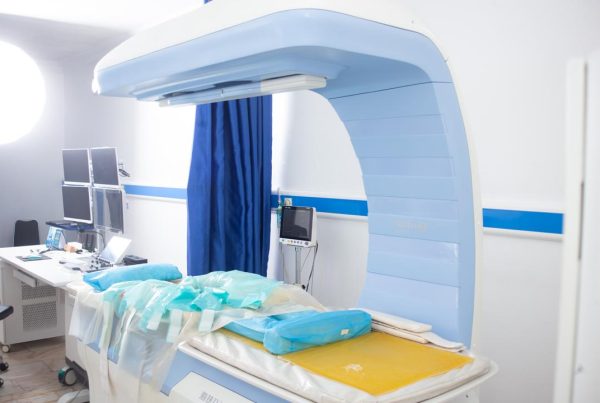For many women, the word “fibroid” can conjure anxiety, especially for those still dreaming of motherhood. This common condition, affecting a significant number of women before age 50, often leads to intense pelvic pain, heavy bleeding, infertility, and emotional distress, frequently culminating in surgical intervention. Yet, a growing understanding of fibroids and advancements in their management are shifting the narrative from a one-size-fits-all approach to a more patient-centric model.
Fibroids, are benign growths in the uterus, and a common reality for many women, with a significant number developing them. Often, the diagnosis of fibroids can trigger anxiety, particularly if you are desiring children. However, a fibroid diagnosis does not automatically mean an end to fertility or an immediate need for surgery. It’s a widespread misconception that every fibroid requires immediate removal. Truly, while some women do face emergency surgery due to severe blood loss, particularly those experiencing heavy menstrual bleeding, many fibroid cases can be managed through what is described as “watchful waiting,” especially as menopause approaches. Rushing into surgery, as some women might fear when they discover the are fibroids, isn’t always necessary.
The consequences of surgery, such as myomectomy, aren’t without their own complexities. For instance things like scar tissue formation post-procedure can impact future fertility and menstrual health. Moreover, underlying conditions like adenomyosis and endometriosis can coexist with fibroids, complicating treatment outcomes and increasing recurrence rates. The rule is that any decision to operate must first consider individual patient factors such as their desire for future pregnancies, and their overall quality of life.
Currently in the evolving landscape of fibroid treatment, the conversation has extended far beyond conventional surgery. If you are seeking alternatives to an invasive procedure, one procedure that has emerged with a lot of promise is the High-Intensity Focused Ultrasound (HIFU). This is a non-surgical method that is particularly beneficial if you prefer to avoid surgery or you have had negative experiences with myomectomy in the past. It’s also perfect for you if you’ve ever experienced fibroid recurrence after previous operations.
HIFU serves as an excellent alternative for you if you are averse to any form of invasive surgery. It is so well researched that the recurrence rate of fibroids post-HIFU treatment is notably lower compared to repeat myomectomies offering a significant advantage for long-term management.
However, it is worthy to note that HIFU isn’t a guaranteed fix for all fibroid issues. Its suitability hinges on the nature of fibroids and its exact location in the uterus; if the position poses risks, alternative treatments like laparoscopy might be necessary. In some complex cases, a combination of HIFU with laparoscopy or hysteroscopy is worthy of consideration. What this does is to emphasize the increasingly personalized nature of modern fibroid management. There is a shift towards treatment plans specifically tailored to each patient’s unique condition and preferences. While fibroids are commonly associated with women in their reproductive years, new insights reveal a broader impact. It’s not uncommon to see fibroid issues in women who have long completed childbearing or are even in menopause. This challenges the popular belief that fibroids are solely limited to the reproductive age group or directly linked to the frequency of pregnancies.
The notion that “if a fibroid doesn’t disturb the woman, the woman should not disturb the fibroid” has long circulated, even within medical circles. This advice, while offering comfort, often clashes with the widespread anxiety and perception in the public that any fibroid must be removed due to potential negative impacts, especially on pregnancy.
The truth is that not all fibroids require removal. If you are not experiencing excessive bleeding, pain, or any negative impact on your quality of life, intervention may not be neccessary. The key is to address your individual symptoms and the impact on your daily living. The decision to treat should always enhance your post-treatment quality of life and outcomes.
It has been clearly established that you can have babies with fibroids in place, contrary to widespread perception that the moment you have fibroid, you can’t get pregnant. Actually it depends on where you have your fibroid, what kind of fibroid it is, and the size of the fibroid. This understanding challenges the widespread notion that fibroids should never be tolerated. Instead, the emphasis is on prompt medical consultation, rather than automatic surgical removal.
One of the most pressing questions for you as a woman who has undergone fibroid treatment is the possibility of recurrence. The straightforward answer is yes, fibroids can reappear. The reason is because as long as the uterus is still there, the conditions that made the fibroid to grow in the first place are still present. You may look at it that the only cure for fibroids is to remove the uterus because it’s the whole uterus that’s been subjected to the condition that made the fibroid to grow. Recurrence can stem from several factors. During surgery, very small fibroids embedded within the muscle of the uterus might be missed. There is also adenomyosis – where uterine lining tissue grows into the muscular wall of the uterus – can be mistaken for fibroids, however unlike fibroids, adenomyosis is a diffuse condition that can be difficult to surgically remove and can cause similar symptoms.
The journey of fibroid management has undergone a significant transformation, the emphasis is now firmly on a patient-centric approach, where treatment plans are meticulously crafted based on individual history, personal aspirations (including future fertility), and thorough medical evaluations. This holistic view aims to optimize outcomes, moving away from a one-size-fits-all model.
By prioritizing individual patient factors and fostering open discussions about all available options, you can be empowered to minimize anxiety, and ensure that fibroid management truly serves to improve your quality of life.




